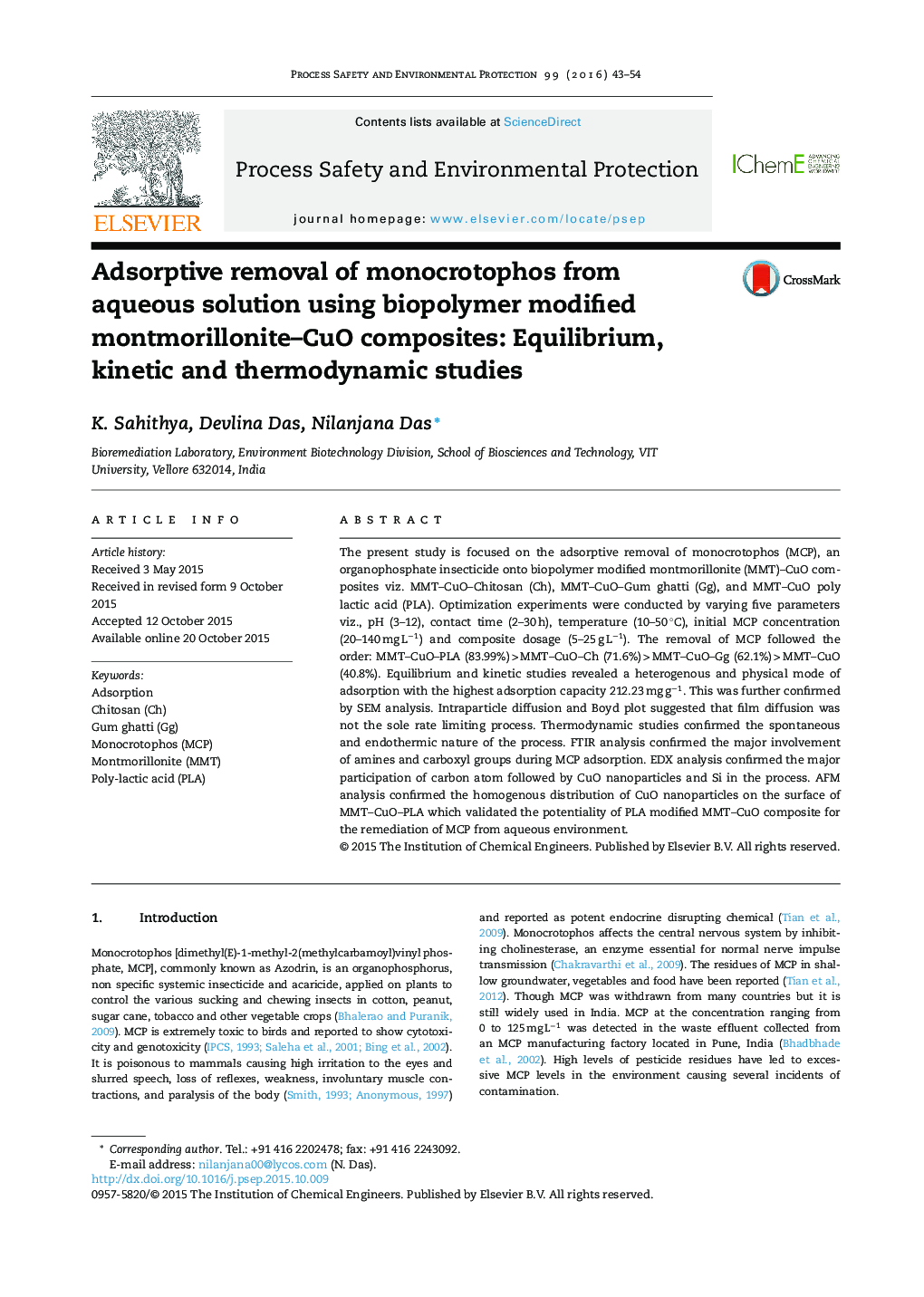| کد مقاله | کد نشریه | سال انتشار | مقاله انگلیسی | نسخه تمام متن |
|---|---|---|---|---|
| 588192 | 1453339 | 2016 | 12 صفحه PDF | دانلود رایگان |
• Biopolymer modified MMT–CuO composites for monocrotophos (MCP) removal is reported.
• Poly lactic acid (PLA) based MMT–CuO composite showed 83.9% MCP removal.
• Order of MCP removal noted: MMT–CuO–PLA > MMT–CuO–Ch > MMT–CuO–Gg > MMT–CuO.
• Equilibrium data fitted to Freundlich model suggesting heterogenous mode adsorption.
• Instrumental analysis confirmed MMT–CuO–PLA as potential MCP remediation agent.
The present study is focused on the adsorptive removal of monocrotophos (MCP), an organophosphate insecticide onto biopolymer modified montmorillonite (MMT)–CuO composites viz. MMT–CuO–Chitosan (Ch), MMT–CuO–Gum ghatti (Gg), and MMT–CuO poly lactic acid (PLA). Optimization experiments were conducted by varying five parameters viz., pH (3–12), contact time (2–30 h), temperature (10–50 °C), initial MCP concentration (20–140 mg L−1) and composite dosage (5–25 g L−1). The removal of MCP followed the order: MMT–CuO–PLA (83.99%) > MMT–CuO–Ch (71.6%) > MMT–CuO–Gg (62.1%) > MMT–CuO (40.8%). Equilibrium and kinetic studies revealed a heterogenous and physical mode of adsorption with the highest adsorption capacity 212.23 mg g−1. This was further confirmed by SEM analysis. Intraparticle diffusion and Boyd plot suggested that film diffusion was not the sole rate limiting process. Thermodynamic studies confirmed the spontaneous and endothermic nature of the process. FTIR analysis confirmed the major involvement of amines and carboxyl groups during MCP adsorption. EDX analysis confirmed the major participation of carbon atom followed by CuO nanoparticles and Si in the process. AFM analysis confirmed the homogenous distribution of CuO nanoparticles on the surface of MMT–CuO–PLA which validated the potentiality of PLA modified MMT–CuO composite for the remediation of MCP from aqueous environment.
Figure optionsDownload high-quality image (207 K)Download as PowerPoint slide
Journal: Process Safety and Environmental Protection - Volume 99, January 2016, Pages 43–54
